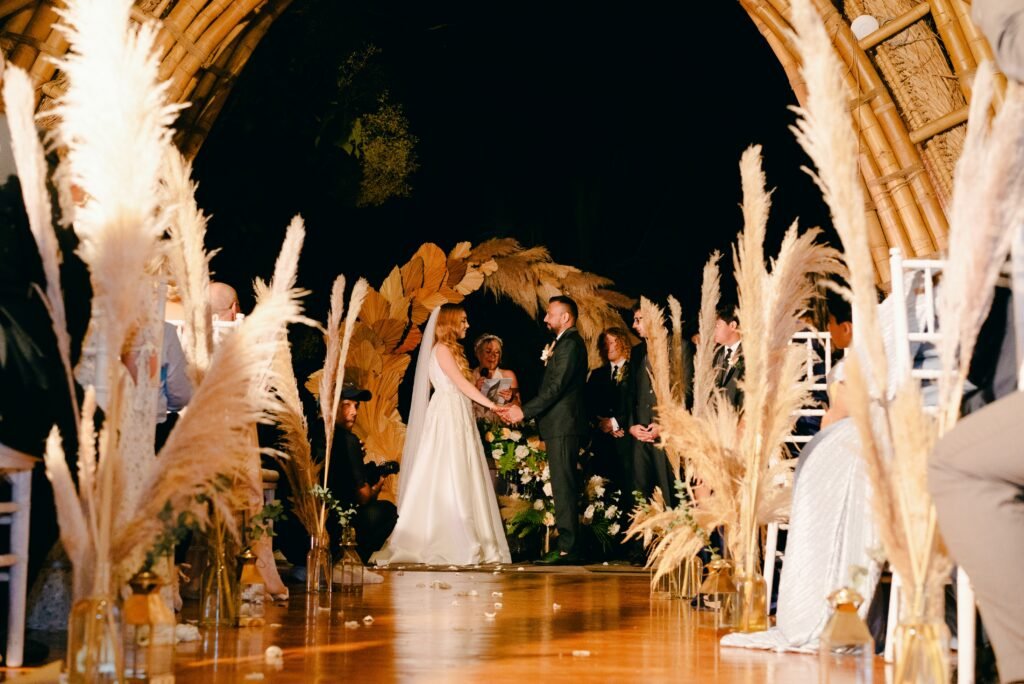
Dive into the heart of the debate for are wedding rings pagan, uncovering the truth behind this age-old question with insights, history, and cultural significance.
Ever wondered about the stories your wedding ring could tell if it could talk?
Well, buckle up because we’re about to take a deep dive into the heart of a question that’s been sparking debates for ages: for are wedding rings pagan?
This isn’t just about a piece of jewelry; it’s about unraveling centuries of history, culture, and a tad bit of mystery.
For Are Wedding Rings Pagan?
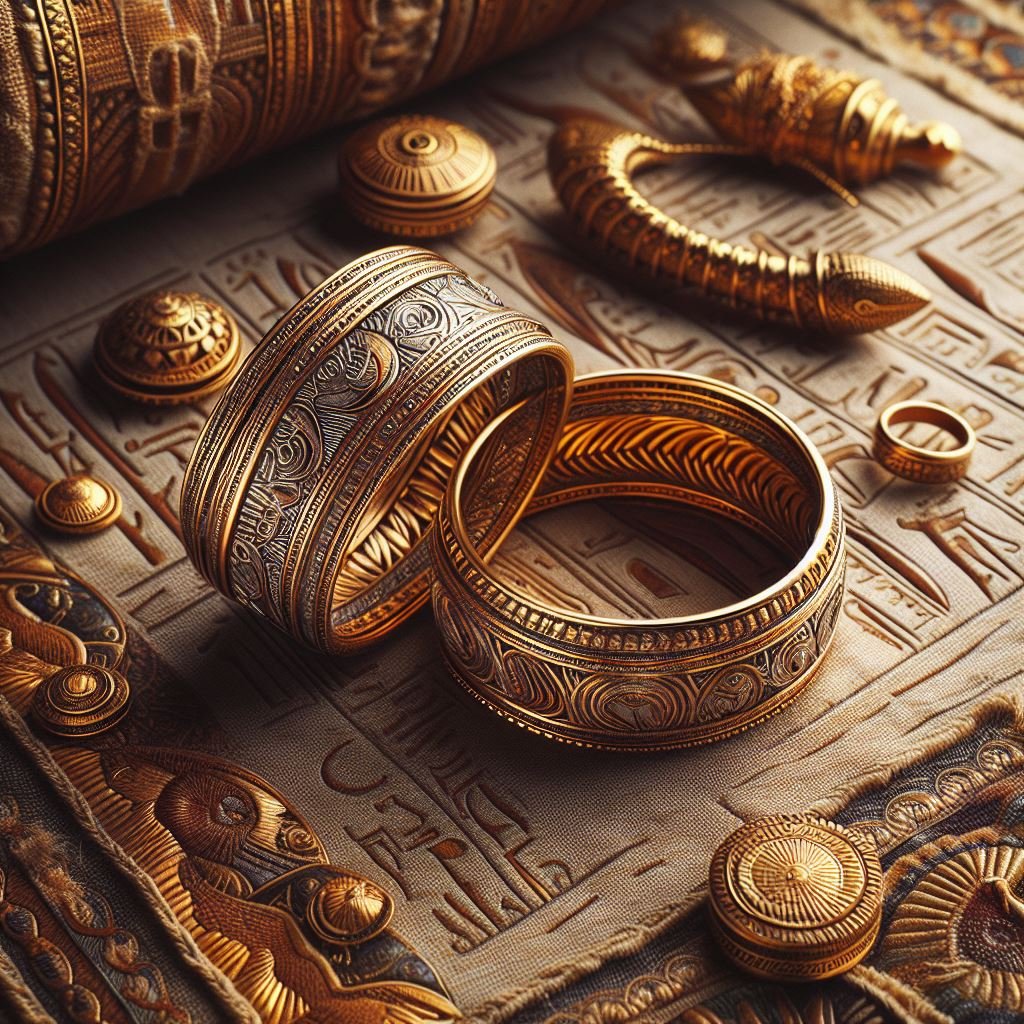
The history of wedding rings is a tapestry woven with threads of ancient civilizations, cultural exchanges, and symbolic meanings that transcend time and geography. To begin our exploration, we must journey back to the cradle of civilization: ancient Egypt.
Here, in the land of the pharaohs, the concept of eternity took shape in the form of circular bands, crafted from precious metals and adorned with intricate designs. These rings, worn on fingers as symbols of everlasting love and commitment, symbolized the eternal cycle of life and the unbreakable bond between individuals.
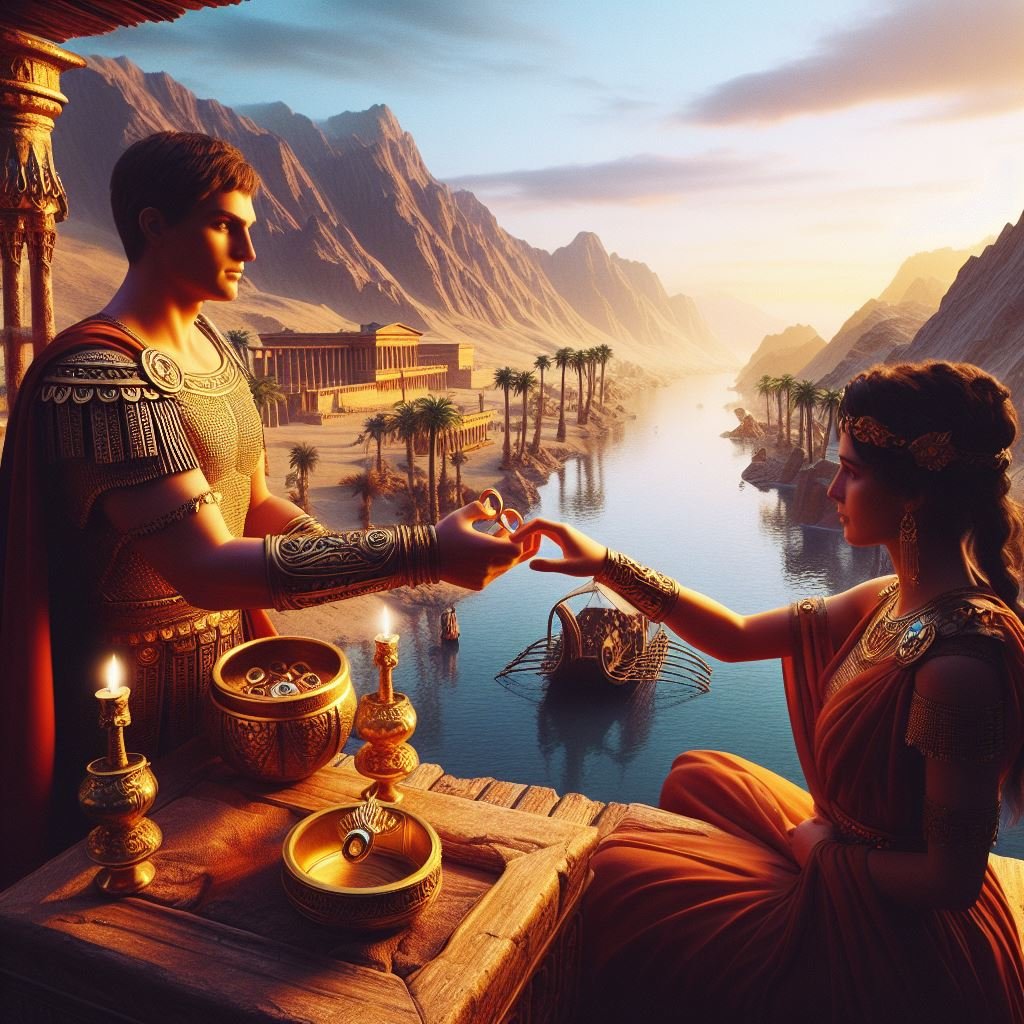
From the banks of the Nile, the tradition of exchanging rings found its way to the heart of the Roman Empire.
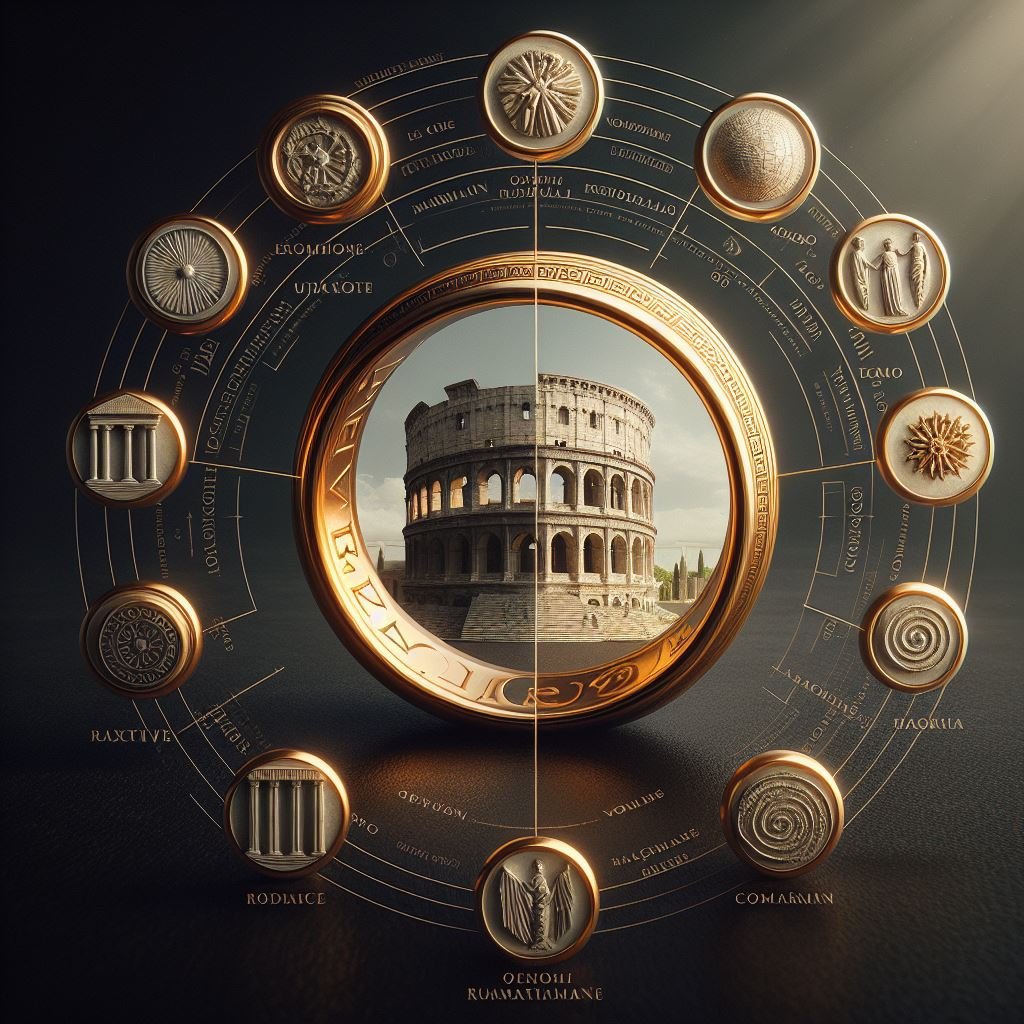
In Rome, wedding rings took on new significance, becoming not only tokens of affection but also legal symbols of matrimonial agreement. The circular shape, devoid of beginning or end, mirrored the unending nature of marriage vows and the eternal union of two souls. As Rome’s influence spread across Europe, so too did the practice of exchanging rings, evolving in meaning and design with each passing era.
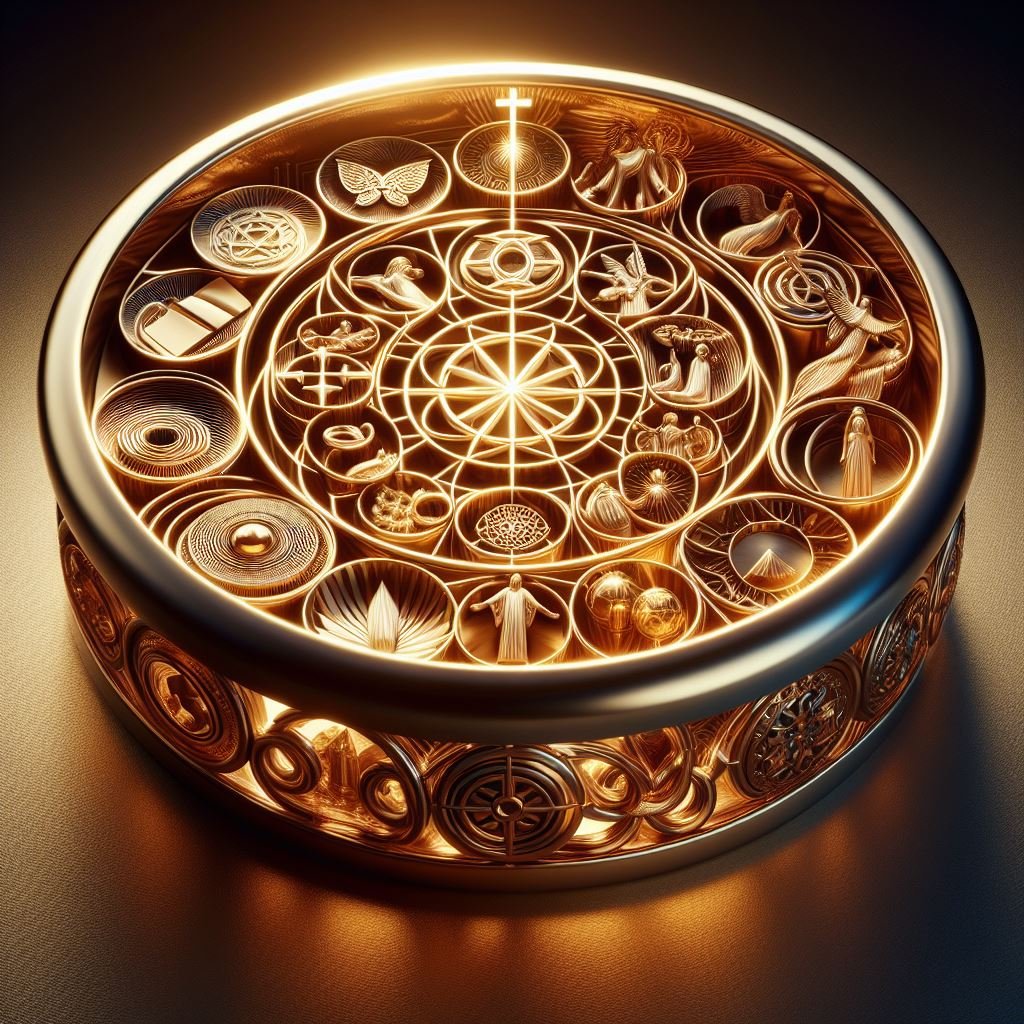
However, amidst the spread of Christianity and the rise of monotheistic religions, the symbolism of wedding rings underwent a transformation. While the circular shape remained a steadfast representation of eternity, the significance attached to these bands began to intertwine with Christian beliefs surrounding marriage and fidelity.
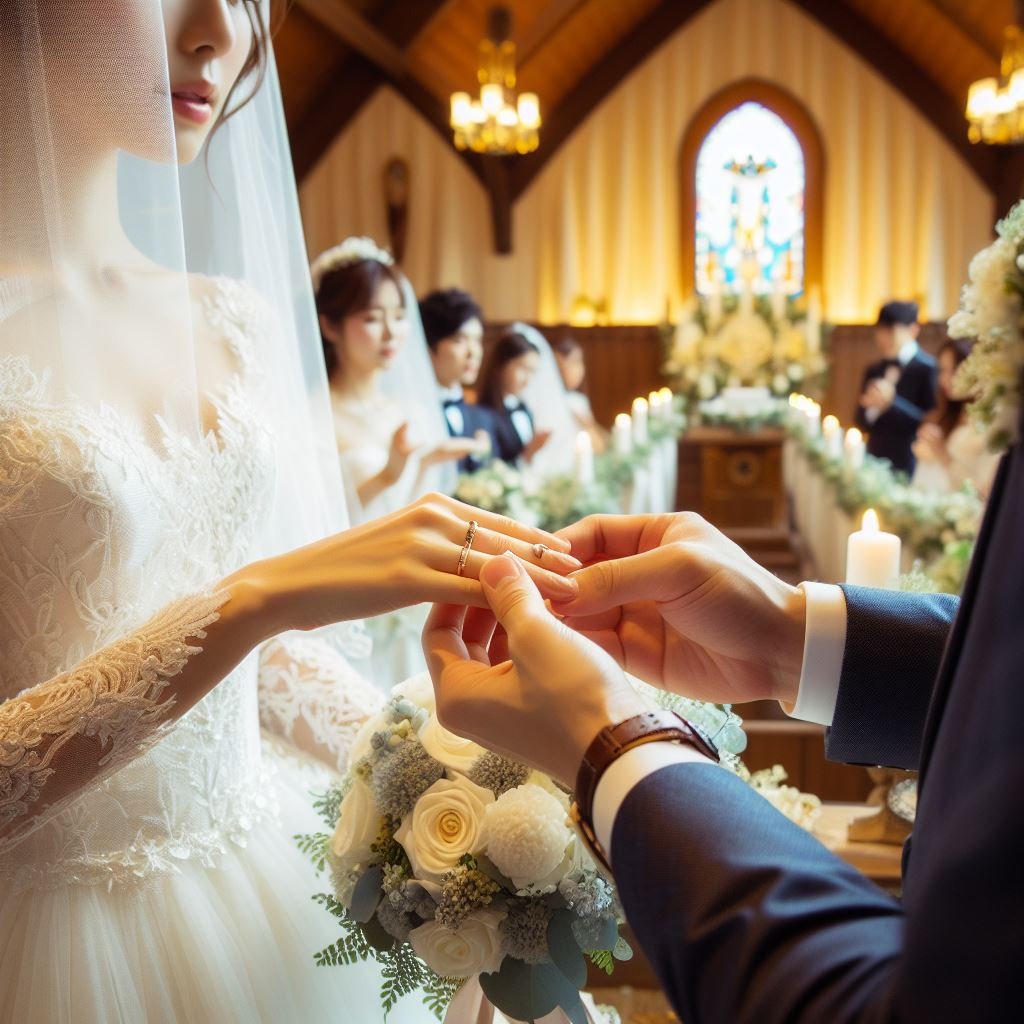
With the rise of Christian wedding ceremonies, the exchange of rings became a sacred ritual, symbolizing the couple’s commitment to each other before God and the community.
Yet, despite the Christianization of wedding rituals, the roots of the wedding ring tradition remained firmly planted in ancient customs and beliefs. It is here that the notion of wedding rings being inherently pagan arises. Pagan societies, with their reverence for nature and the elements, often incorporated rings into their rituals and ceremonies as symbols of unity and spiritual connection.
However, to label wedding rings as exclusively pagan overlooks the universality of their symbolism and their adoption by diverse cultures and belief systems.
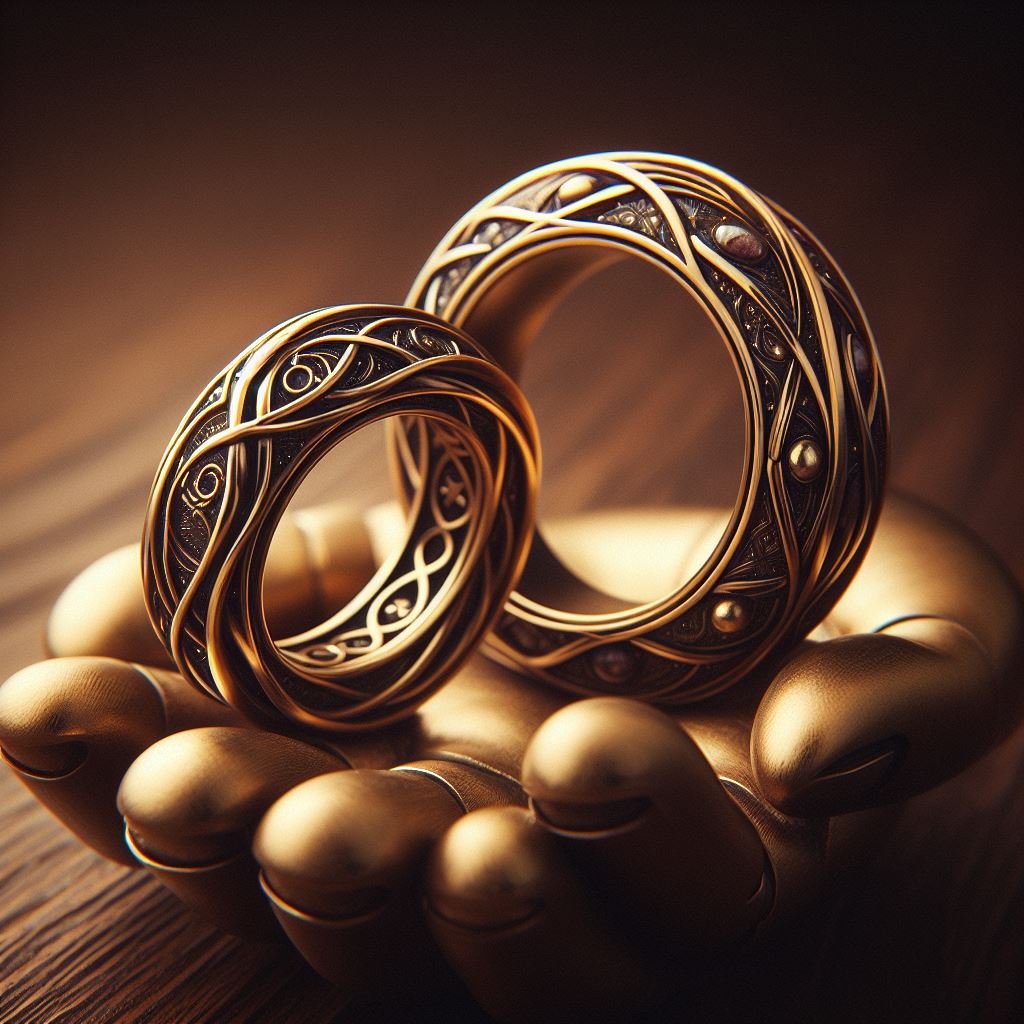
Indeed, the circle, with its infinite shape, speaks to a fundamental aspect of the human experience: the desire for enduring love and companionship. Whether exchanged in a Christian church, a Hindu temple, or a pagan ceremony, wedding rings carry with them the weight of centuries of tradition and symbolism.
They are not bound by the confines of any single religion or culture but instead serve as bridges connecting individuals across time and space in celebration of love and commitment.
In conclusion, while wedding rings may have ancient roots in pagan customs and beliefs, their significance transcends any single religious or cultural framework. As symbols of eternal love and commitment, they speak to the timeless human desire for connection and unity.
So, are wedding rings pagan? Perhaps in origin, but in practice, they are so much more—a testament to the enduring power of love in all its forms.
The Evolution of Wedding Rings: From Ancient to Modern Times
The evolution of wedding rings spans millennia, traversing through the annals of ancient civilizations to the modern era, each epoch leaving its indelible mark on these timeless symbols of love and commitment.

Dating back to antiquity, the origins of wedding rings can be traced to ancient Egypt, where the circle emerged as a potent emblem of eternity and the eternal cycle of life. These early rings, often fashioned from humble materials like reeds or braided grass, were exchanged between spouses as tangible tokens of their union, binding them in a sacred covenant recognized by their community.
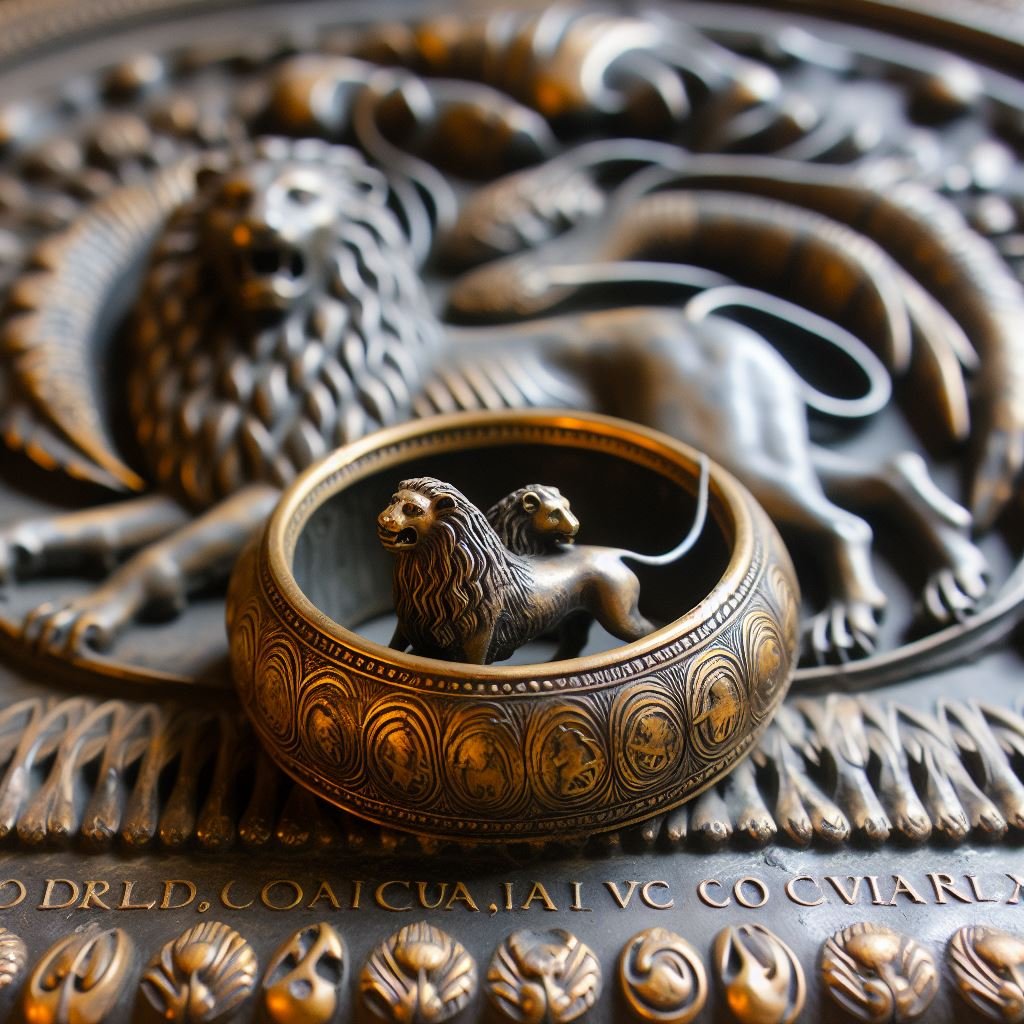
As civilizations flourished and cultures intermingled, the practice of exchanging rings spread across the ancient world, finding resonance in the heart of the Roman Empire. In ancient Rome, wedding rings evolved into more durable and ornate forms, crafted from materials such as iron and adorned with intricate engravings symbolizing fidelity and devotion.
The circular shape, embodying the unbroken continuity of love, became synonymous with the institution of marriage, transcending linguistic and cultural boundaries.
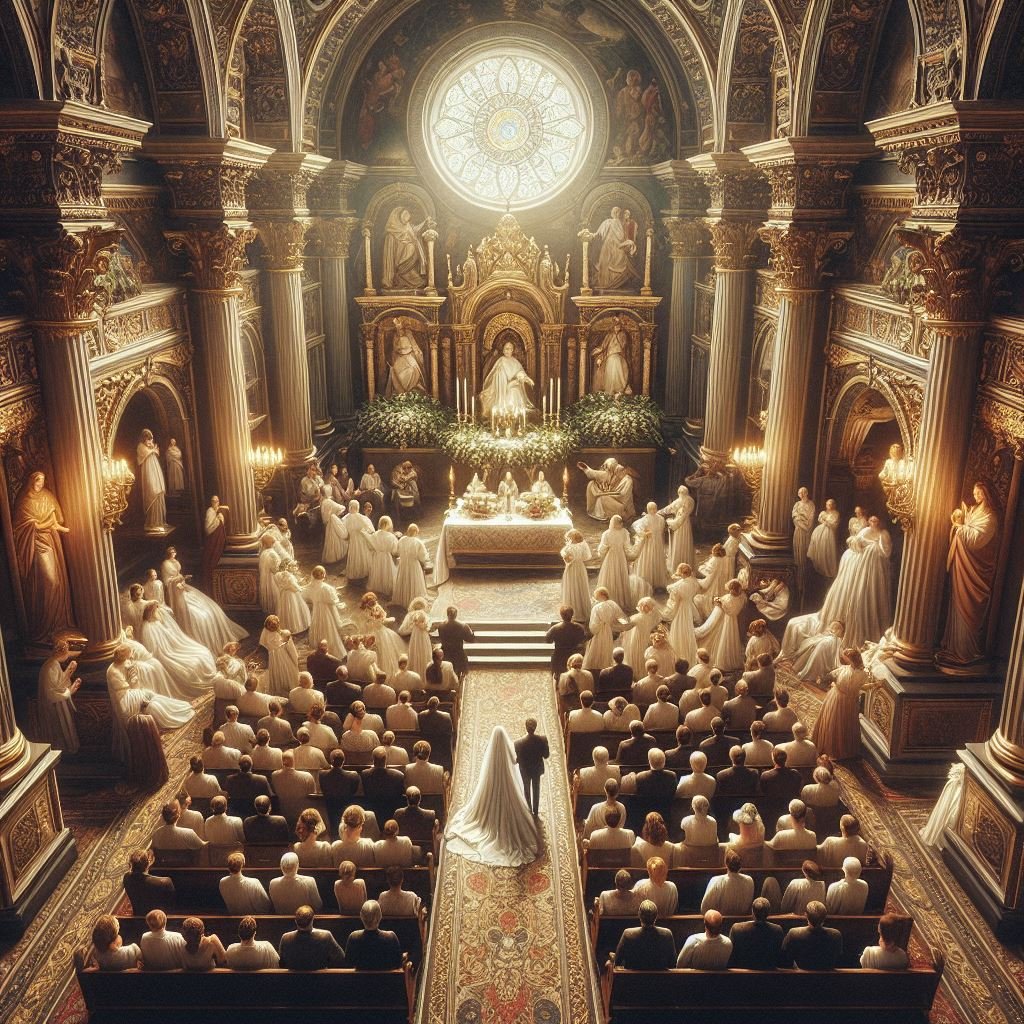
Throughout the medieval period, wedding rings continued to hold sway, albeit with nuanced variations influenced by regional customs and religious beliefs. In Europe, the Christian church sanctified the exchange of rings as an integral part of the marriage ceremony, imbuing them with spiritual significance and solemnity. The symbolism of the ring as a circle of unending love found resonance in Christian teachings, reinforcing the eternal bond forged between husband and wife in the eyes of God.
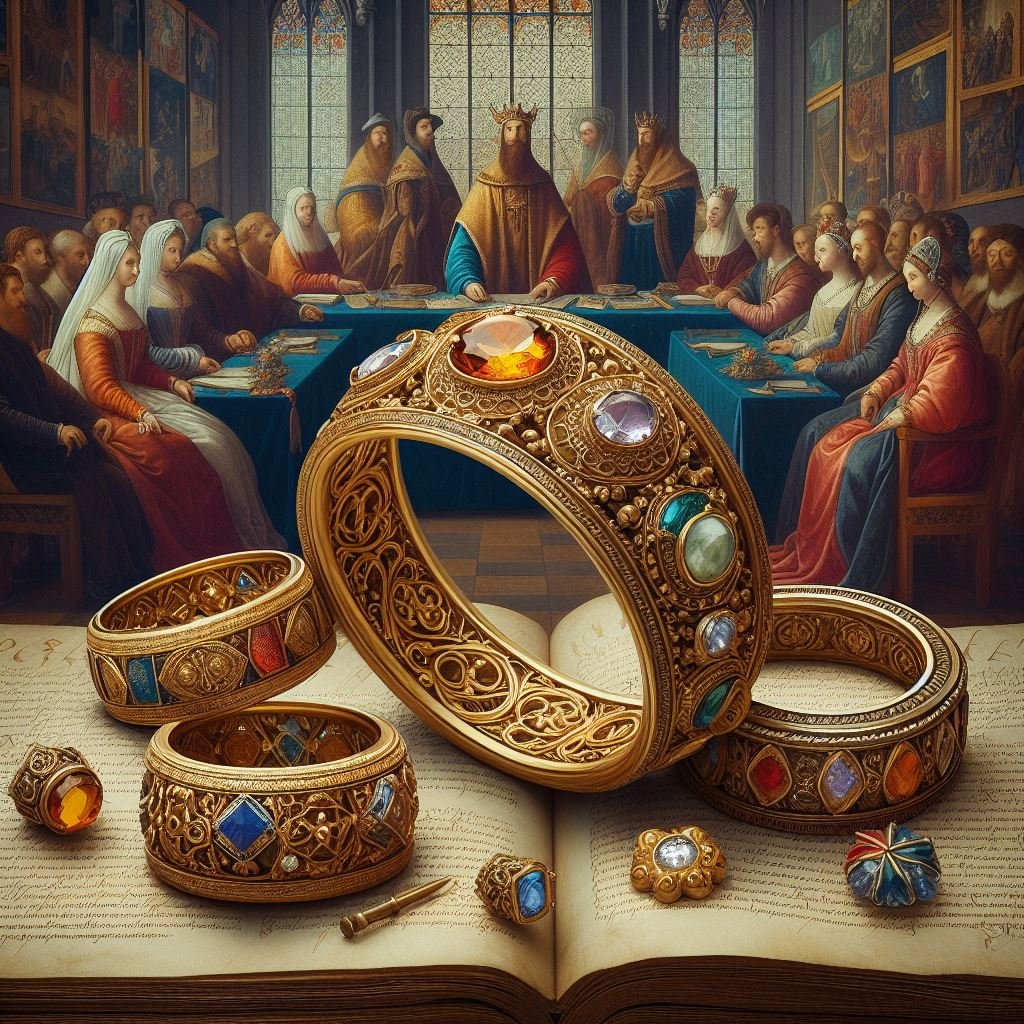
During the Renaissance, wedding rings emerged as symbols of wealth and social status, with nobility and aristocracy adorning them with precious gemstones and intricate filigree work. The Renaissance period witnessed a proliferation of artistic expression, reflected in the elaborate designs and motifs adorning wedding rings, each piece a testament to the creativity and craftsmanship of its maker.

As the world entered the modern era, wedding rings underwent a paradigm shift, evolving from mere symbols of union to expressions of personal style and taste. The discovery of vast diamond deposits in South Africa in the late 19th century sparked a diamond rush, catapulting the gemstone into the spotlight as the quintessential symbol of love and romance.
Diamond engagement rings became de rigueur, symbolizing not just commitment but also prosperity and social standing.

In the 20th century, the influence of mass media and advertising further propelled the popularity of diamond engagement rings, cementing their status as a cultural icon. Hollywood celebrities flaunted their dazzling rocks on the silver screen, fueling a global obsession with all things diamond. The De Beers marketing campaign, with its iconic slogan “A Diamond Is Forever,” solidified the association between diamonds and eternal love, shaping consumer perceptions for generations to come.
In recent decades, wedding ring trends have continued to evolve, reflecting changing societal norms and values. Non-traditional materials such as titanium, tungsten, and even wood have gained traction, offering couples a wider array of options to express their individuality. Customization has become increasingly popular, with couples opting for bespoke designs that reflect their unique love story and shared interests.
Today, the meaning of wedding rings transcends cultural and religious boundaries, serving as universal symbols of love, commitment, and fidelity. Whether fashioned from traditional metals like gold and platinum or adorned with dazzling gemstones, wedding rings continue to unite couples in a bond that spans time and eternity. As we journey forward into an uncertain future, one thing remains certain: the enduring allure of the wedding ring, a timeless symbol of enduring love and devotion.
FAQs About Wedding Rings and Their Pagan Origins
- Why do some think wedding rings are pagan? It’s all about the origins. Since wedding rings date back to times when pagan cultures were thriving, some folks assume the tradition must be pagan too. But it’s more about the evolution of a symbol than a direct religious connection.
- What materials were originally used for wedding rings? The Egyptians kicked things off with hemp and reeds, while the Romans brought in iron for durability. Gold, silver, and eventually diamonds joined the party as symbols of purity, clarity, and enduring love.
- How did wedding rings become a Christian tradition? As Christianity spread, it adopted and adapted many cultural practices, including the exchange of wedding rings. The church put its own spin on the tradition, emphasizing the rings as symbols of a holy covenant between couples.
- Are there cultures that don’t use wedding rings? Absolutely! Many cultures have their unique symbols and rituals for marriage, from intricate tattoos to ceremonial garments. The world’s a big place, and love’s expressions are as diverse as its people.
- Can wedding rings be considered secular today? For sure. Today, wedding rings transcend religious and cultural boundaries, symbolizing love and commitment in a language everyone can understand.
- What’s the deal with diamond rings? Diamonds became the go-to for engagement and wedding rings thanks to a mix of clever marketing and the stones’ natural durability. They symbolize a love that’s as enduring as the hardest rock on Earth.
Conclusion: The Circle of Love
So, are wedding rings pagan? Not quite. They’re more like a universal symbol of love that’s managed to weave its way through history, picking up meanings, styles, and a whole lot of sparkle along the way.
Whether you’re into the bling or prefer something more understated, the essence of a wedding ring remains the same: a circle of love, unbroken and everlasting.
And speaking of love, if you’re on the hunt for someone to capture those magical moments on your big day, look no further. At Photolagi, we’re all about immortalizing your love story through stunning photography and videography.
From the first kiss to the last dance, we’ve got you covered.
Give us a shout on WhatsApp at wa.me/6282253126663 and don’t forget to check out our Instagram – https://instagram.com/photolagi.id for a sneak peek of our work.
Ready to make your wedding unforgettable? Let’s chat!
Explore More:
- Destination Wedding Planning Guide
- Discover the Most Stunning Destination Weddings Locations in Indonesia
- The 27 Best Wedding Venues in Bali
Real Wedding Stories:

